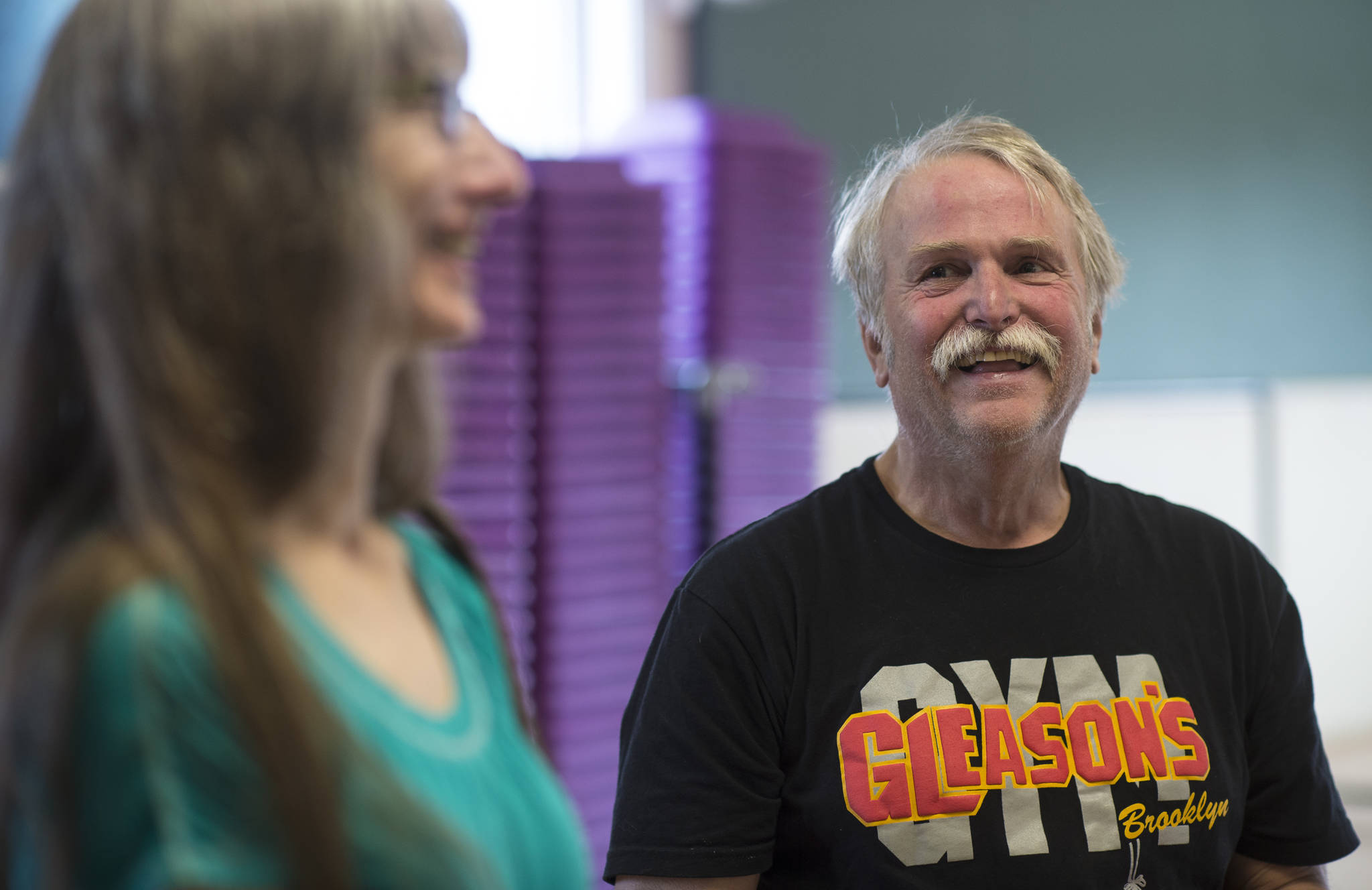Editor’s Note: This is the last of four profiles highlighting stories of local people with Parkinson’s disease, as part of Parkinson’s Awareness Month in April.
Richard Steele is doing everything he can in his battle with Parkinson’s disease — including have electrodes attached to his head.
The 65-year-old Juneau resident has traveled to Harvard University for transcranial magnetic stimulation to help slow the uncontrollable movements from the progressive disease.
“It was just a couple electrodes on my head that would send electronic waves to my brain,” Steele said. “It did alleviate some pain for about a day or two. I think the eventual idea of it is to make a home unit.”
According to the Harvard Health Publishing website, TMS works like this: “An electrical generator produces a series of strong magnetic fields in a wire coil, which is mounted on a paddle and positioned on or near a patient’s forehead or scalp. The fluctuating magnetic force produces an electrical current that influences neurons in the area directly under the coil.”
“It stimulated my brain,” Steele said. “Whether or not it helped make more dopamine, I am not sure.”
About a decade ago, Steele began experiencing some symptoms of the disease, including losing his sense of smell and difficulty walking. Eventually, about two and a half years ago, he was diagnosed with Parkinson’s.
“I had a funny gait and I didn’t look like I was happy in any photos,” he said. “I was misdiagnosed until I went to a neurologist in Texas. It took 15 minutes to diagnose me (with Parkinson’s) there.”
Steele continues to try different procedures for the progressive disease because there is not yet a cure for Parkinson’s.
That is why he is also considering embryonic stem cell implants. This process, according to www.cureparkinsons.org, has been tested on laboratory rats and shows it is possible to make dopamine cells from embryonic stem cells and transplant them into the brain, thus replacing the cells lost in the disease. However, Steele must wait to see if the procedure gets approval from the Federal Drug Administration and then wait to hear if he actually gets selected. Steele said he should know by June.
“I kind of have mixed feelings about it,” Steele said. “(The procedure) is about targeting the disease, but it may not cure it. It’s a long shot. If I do get picked, I’m essentially a guinea pig.”
Steele said the procedure “sounds relatively safe” and “it is just some minor holes in the head.”
Steele’s caretaker and wife Luann McVey also stresses the idea of maintaining a healthy lifestyle to alongside the medical procedures.
Steele mostly consumes a plant-based, plus fish diet with limited or no red meat or dairy.
“Really, it is good principles for anyone who wants to be healthy,” McVey said.
Another change Steele made was to his diet. He sent bloodwork to Seattle Integrative Medicine and received a diet plan from the company. Steele said he usually sticks to the plan, but it can be difficult.
“I love ice cream,” Steele said. “I am not supposed to be eating dairy.”
McVey — who Steele calls an “exercise guru” — is a yoga teacher. Steele said having an active and health person around him has helped in his battle. McVey follows the same diet as Steele and provide encouragement in his exercise.
“She is my cornerman,” Steele said. “She has a great attitude. I think it’s a big plus.”
In addition to the procedure and diet, Steele is a major advocate of exercise. He helped initiate the Rock Steady Program at Pavitt Health and Fitness and participates every day it is held. He also swims and walks as much as he can. He suffers from dystonia, where muscles tremor and cause a constant and dull pain. Steele said exercise does alleviate some of that pain.
“I really think exercise helps even more than medicine,” Steele said.
While the struggles of the disease are discouraging, Steele said, he at least has the ability to have some control.
“I’m lucky that I have a disease I can do something about,” Steele said.

